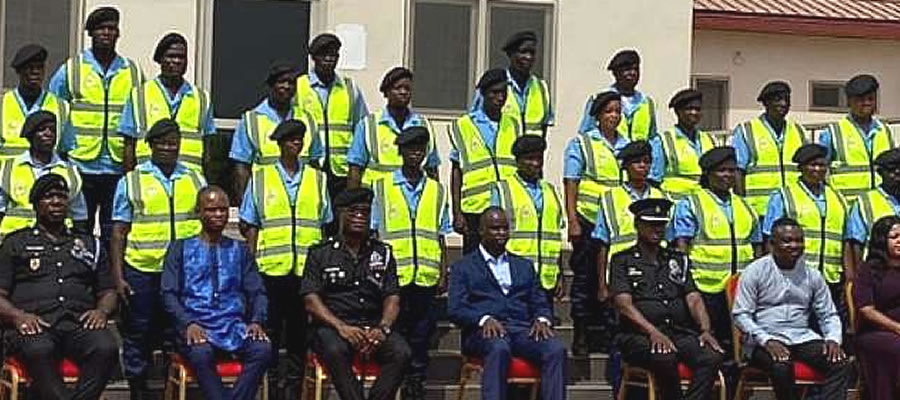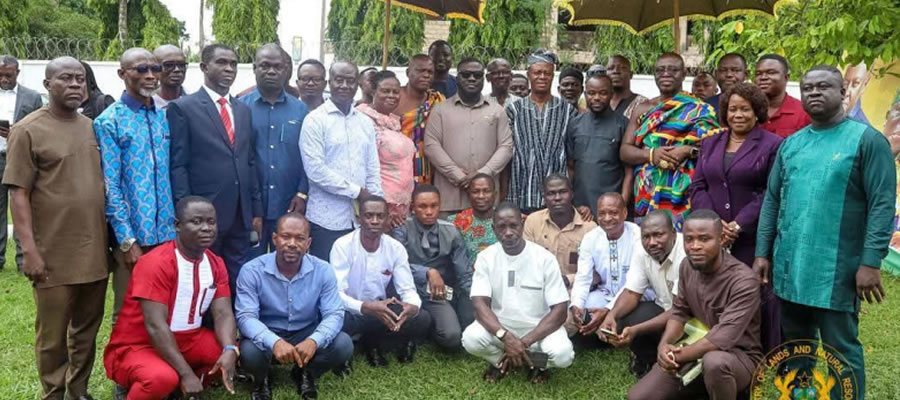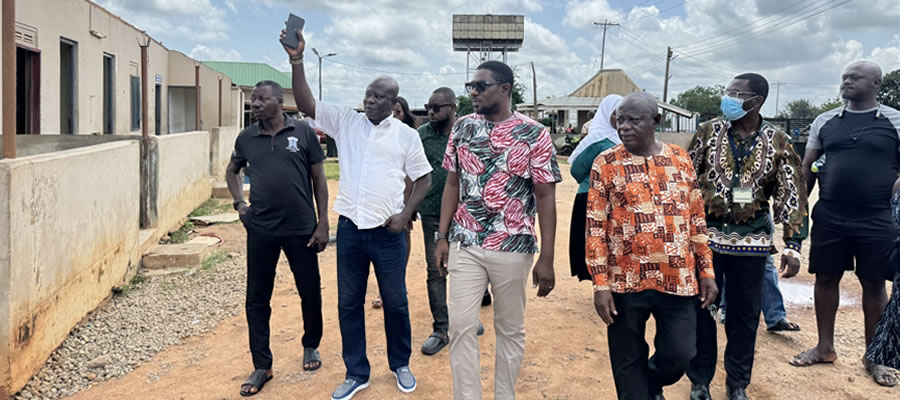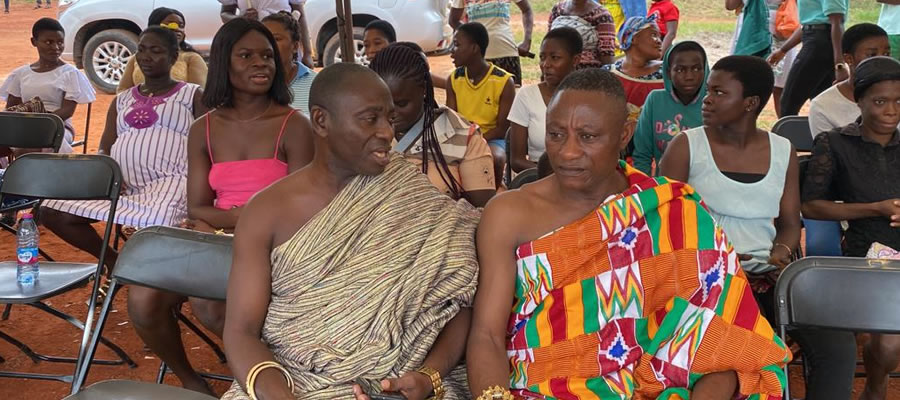

Private Sector Participation
Private sector participation in governance cannot be over emphasized today. Government alone cannot bear the burden to development and has to share it with the private sector. The private sector is therefore to augment and Partner the government in development.
There is high participation of the private sector in construction, revenue mobilization, community sensitization and waste management among others. Majority of the private sector operators are NGOs with non- profit motive. These NGOs are engaged in Community Animation, provision of social infrastructure, environmental conservation, food production and HIV/AIDS prevention educational campaign, among others. Some of these NGOs include:
1. Centre for Urban and Rural Action (CURA)
2. Rural Youth Development Association (RUDEYA)
3. Renewable Natural Resources Students Association (RENARSA)
4. Basic Support for Institutionalizing Child Survival (BASICS)
5. Planned Parenthood Association of Ghana (PPAG)
6. Training Research and Networking Development (TREND)
7. Action Volunteers Association (GHANA) (AVGA)
8. Sasakawa Global 2000
9. Self Help Foundation
10. Heifer International
11. Outreach Voluntary Organization (OVO)
Community Participation
Some communities in the district, especially in the rural areas organize Communal Labour to carry out self-help projects such as clearing of farm tracks, footpaths, construction of public pit latrines and school infrastructure. Some also contribute in cash and in kind towards external funded projects like drilling of boreholes. However, most of these community activities are not well planned, and therefore the communities face a lot of implementation bottlenecks which result in delays in their completion.
There is generally low community participation in decision making and implementation, and the linkage between the District Assembly and the communities is not strong enough. Assembly members and Unit Committees are supposed to link the communities to the District Assembly, but there is currently low interaction between them and the communities under them. Where these interactions exist, the participation of women and the youth was always low.
The district Assembly should put in place measures to increase community participation (especially women and the youth) in decision making, Planning and implementation. The Assembly should facilitate interaction of Assembly members/ Unit committees with their community people. It is also necessary for the District Assembly to promote the preparation of participatory Community Plans and also, put in measures to ensure their implementation, monitoring and evaluation.
More NGOs in the district
1. Onua Do Club, P. O Box 117, Abuakwa
2. Asaase Chistian International School
3. Adehyee Club, P. O. Box 83 Kwaaso 0244-431621
4. Asaso Nyame mmere Club, P O Box 7557, 0277-405103
5. Abuakwa Stores Owners Asso. P. O. Box 7, 051-51670, Abukwa
6. Amodum Adankwame Lovers, P. O. Box 22 Akropong club
7. Atwima Drivers Asso. % P. O. Box 24, Toase-Nkawie
8. Akawie Yam Sellers Koro ye kuo NK75
9. Achiase Nkosoo Kuo, ( Progressive Club) P O Box BP 293, 051-35971
10. Toase Kroye Kuo, Box 34, Nkawie-Toase
11. Youth Tomorrow Int. Ghana, P. O. Box KS8236, 0277-802442, 0277-360517
12. Social Infrastructure
The District has a total road network of 246.70 kilometers, out of these 109.50 kilometers of Bitumen surfaced road. This represents 44.39% of total road surface in the district. The length of bitumen surfaced roads in the district has increased from 82.2 km in 2005 to 109.5km in 2009. The percentage of roads in good condition has also increased from 57.3% in 2005 to 67.29% in 2009. A total of 166kms of road (out of 246.7km) is in good condition. Motor vehicle remains an indispensable means of transport for most people in the district; the generally high level of good roads in the district makes movement within and outside the district relatively easier and cheaper.
However, the condition of about 35.2km (14.27%) of the district’s total road network is fair, whiles 45.50kms (18.44%) is bad, as shown in table 21. This analysis indicates that more needs to be done by the District Assembly and the Road Agencies to improve the condition of graveled roads in the district, especially those in the remote Cocoa and food crop growing communities in Barekese and Akropong Area Councils, so as to improve accessibility towards increased food production, access to market and reduce poverty.
Accessibility in terms of feeder roads is not satisfactory, especially, in the remote Cocoa and food crop growing communities of Barekese and Akrropong Area Councils. Some of roads become almost impassable during the rainy season. This renders movement to and from such areas very difficult. Farmers are unable to transport their produce to marketing centres and therefore most of these produce go bad or are bought at very low prices by middlemen. People in these are unable to access basic services.
Electricity
All major towns in the District are hooked unto the National Power Grid. However, frequent power outages leave the work of E.C.G. much to be desired.
Some settlements have applied for assistance under the Self-Help Electrification Programme, which is on-going. There is therefore the need for ECG to improve the quality and coverage of Electricity supply in the district to light and to services and production.
Date Created : 11/24/2017 6:28:44 AM












 facebook
facebook
 twitter
twitter
 Youtube
Youtube
 +233 593 831 280
+233 593 831 280 0800 430 430
0800 430 430 GPS: GE-231-4383
GPS: GE-231-4383 info@ghanadistricts.com
info@ghanadistricts.com Box GP1044, Accra, Ghana
Box GP1044, Accra, Ghana